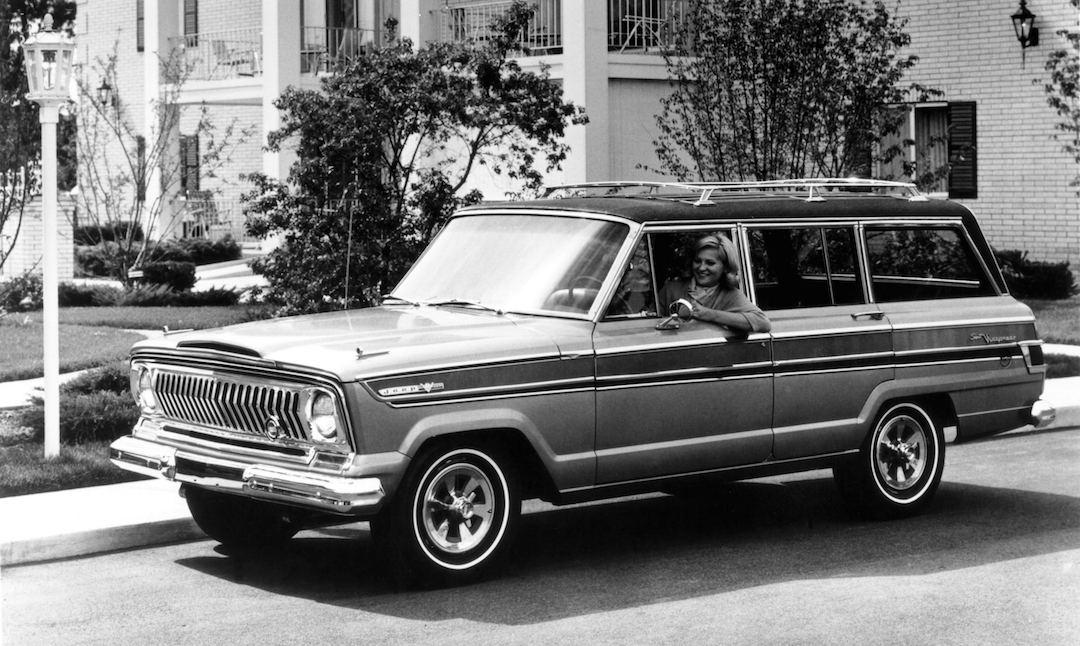"Camp Jeep is a massive event for the Jeep Owners Group, drawing enthusiasts from all over the world. It is the European version of the Jeep get-togethers that are held across the United States, from Tennessee and Arizona to Maine "

Jeep Wagoneer: When wood is good
It’s hard to think of a time before the roads were swamped with Sport Utility Vehicles (SUVs).
Before the 1960s, though, US drivers enjoyed a staple diet of sedans and station wagons, with little temptation. Then, fifty-five years ago, Jeep launched the tasty Wagoneer, which not only appealed to the more sophisticated and modern palate: it was the first ‘modern’ SUV.
Think ‘Jeep’ and the typically rugged Willys-inspired Wrangler lollops through the mists of time. Unless drivers specifically wanted an off-roader, most seemed to be perfectly content with their notchbacks and box-like, square rear-ended hold-alls.
That all changed in 1963, when the original Jeep Wagoneer hit the boulevards and freeways. Combining the practicality of a traditional station wagon – it could swallow seven-feet long ladders laid flat! – with off-road ability, the trailblazing Jeep genuinely offered something new.
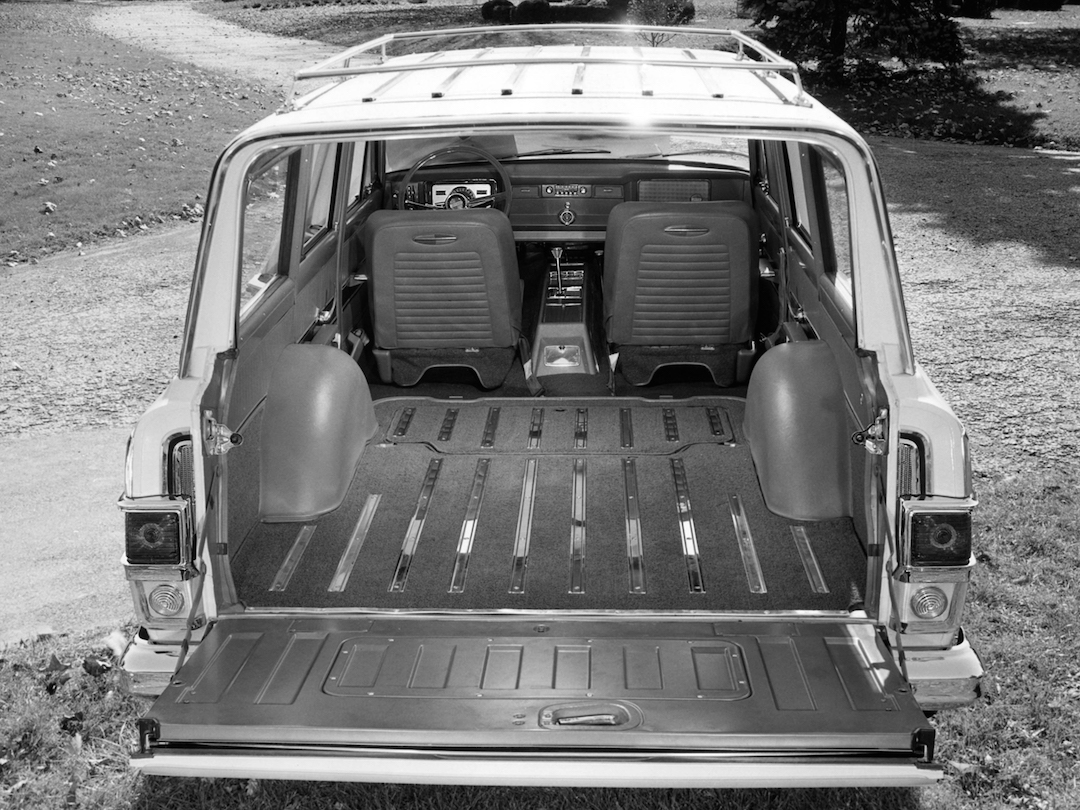
It also made boxy elegant, its slim windscreen pillars, large glasshouse and triangular rear pillars all statements of style. Later came the infamous woodgrain side panels, a then-naff but now-stylish masterstroke. An element that style forgot however, was the early cars’ upright chrome grille, which looked like it had been pilfered from a Rolls-Royce Silver Cloud II. Later models’ shiny all-chrome ‘egg crate’ front grilles were much more, well, ‘American’ retro cool.
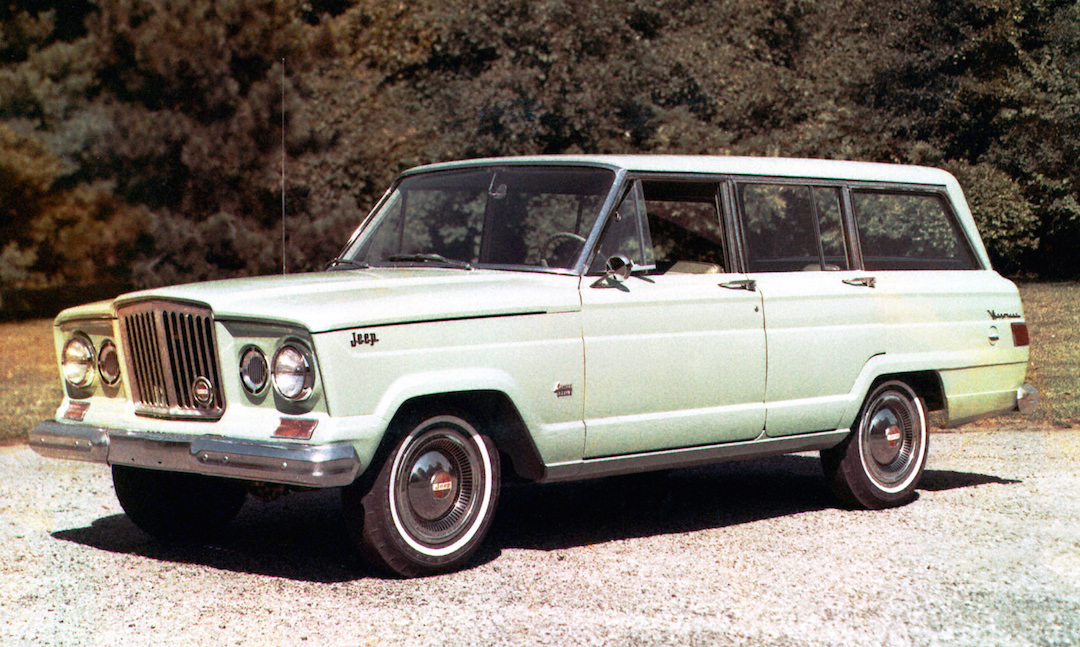
Powered by Jeep’s 140bhp 3.8-litre ‘Tornado’ six-cylinder engine, stick shift and – more importantly for most Wagoneer drivers – auto transmissions were available, while rear and four-wheel drive versions catered for those who just wanted to pootle to the shops, and owners who were a little more adventurous and fancied some boulder-bashing.
And boy, thanks to its front and rear leaf springs, could the Wagoneer boulder-bash! As well as being the first SUV, the big Jeep was also the first off-roader to feature independent front suspension. Additionally, the automatic transmission and four-wheel drive marriage was the first-ever time the ceremony had taken place.
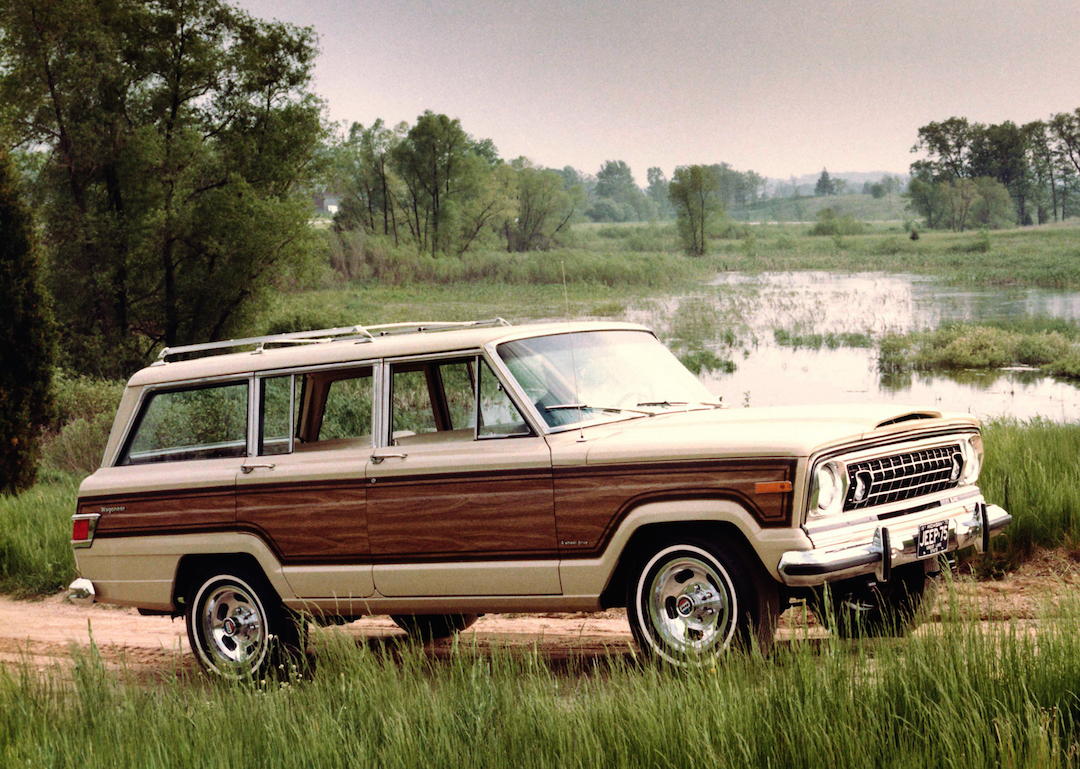
In 1970, the American Motors Corporation (AMC) bought Kaiser-Jeep, and although a few changes were implemented, the Wagoneer’s basic look remained. In the decade which followed, a pair of extra-cost V8s – with up to 175bhp – supplemented the now 110bhp 4.2-litre straight six.
The technological Quadra-Trac full-time four-wheel drive system also debuted, as did the Wagoneer’s little brother, the Cherokee, itself a two-door version of its older relative. The Wagoneer was the more plush, though, the newer and arguably less practical Cherokee selling because it was basking in the upmarket image of the older machine.
High-spec options included a CB radio, cruise control, front powered disc brakes and power steering. But it wasn’t all show and no go. No, siree. The Wagoneer packed enough muscle to allow a snow plow ‘blade’ to be fitted to its front, along with a 3.6-tonne towing winch, and a set of optional low-range gears.
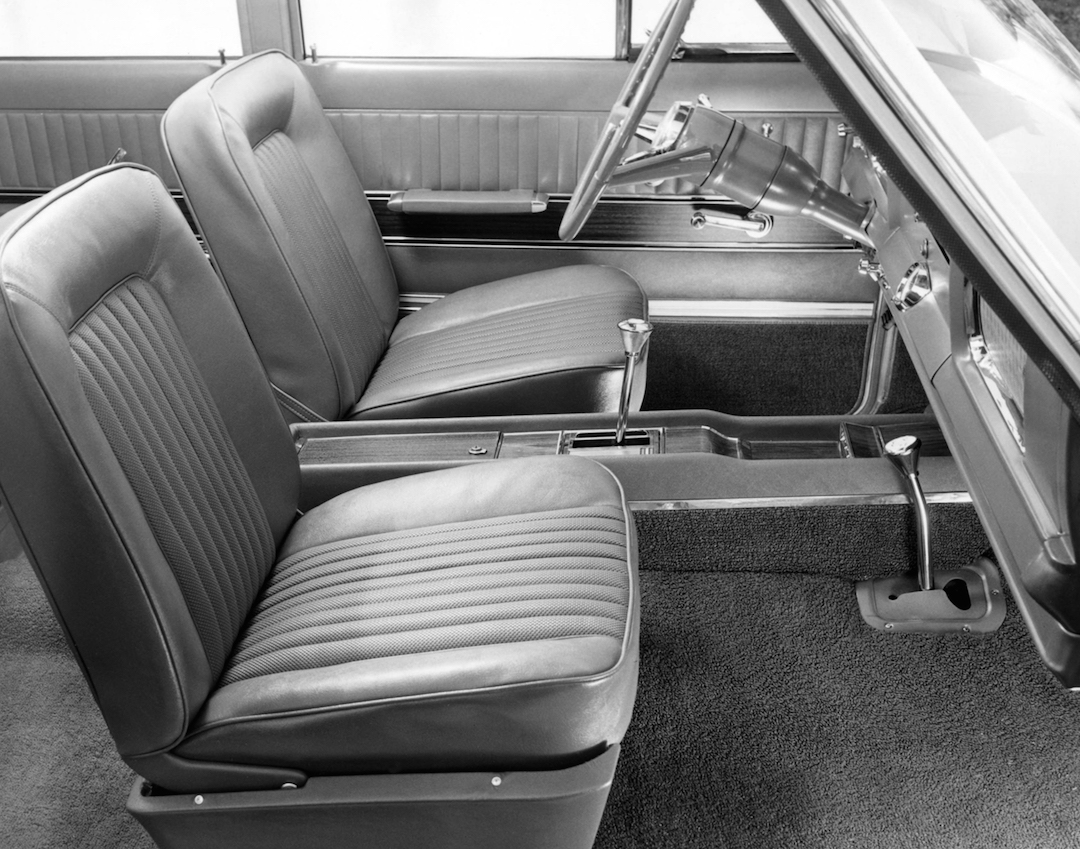
By the mid-1980s, the Wagoneer element of the Cherokee’s DNA had become just marketing spin, the new ‘XJ’ series of cars owing little to the original which had borne them. The original Wagoneer was now the Grand Wagoneer, and as it was older, owned the apt ‘Senior Jeep’ (‘SJ’) body code. What was confusing was that the Cherokee-based ‘XJ’ Wagoneer model was sold alongside its regular Cherokee siblings, which was about as useful as a soft-rope lasso.
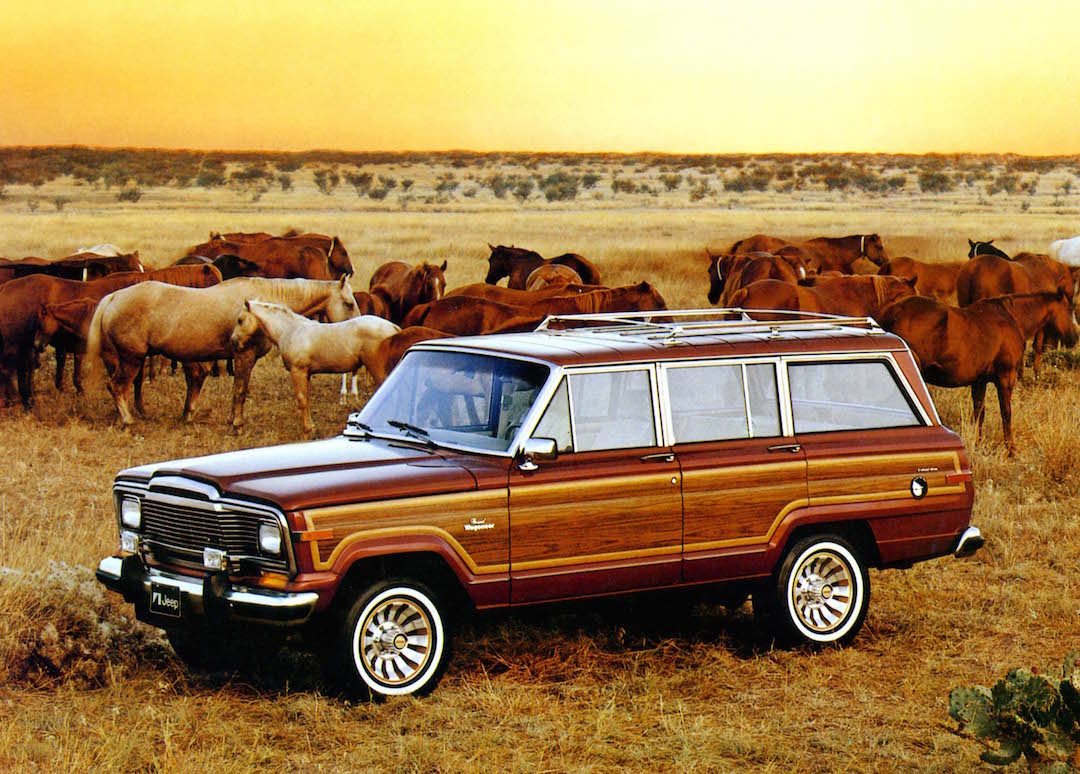
The Grand Wagoneer’s 1970s-inspired looks continued into the 1990s, when the company was owned by Chrysler. Now more of a sumptuous, leather-lined expensive carry-all car than the more basic car of 30 years before, the Wagoneer was the American answer to the luxury SUV question which perhaps didn’t need answering: the British Range Rover had been unofficially available Stateside since the mid-1970s. Its survivor spirit wasn’t in doubt, though: when it died in 1991, it had the honour of having the oldest unchanged body style of any American car.
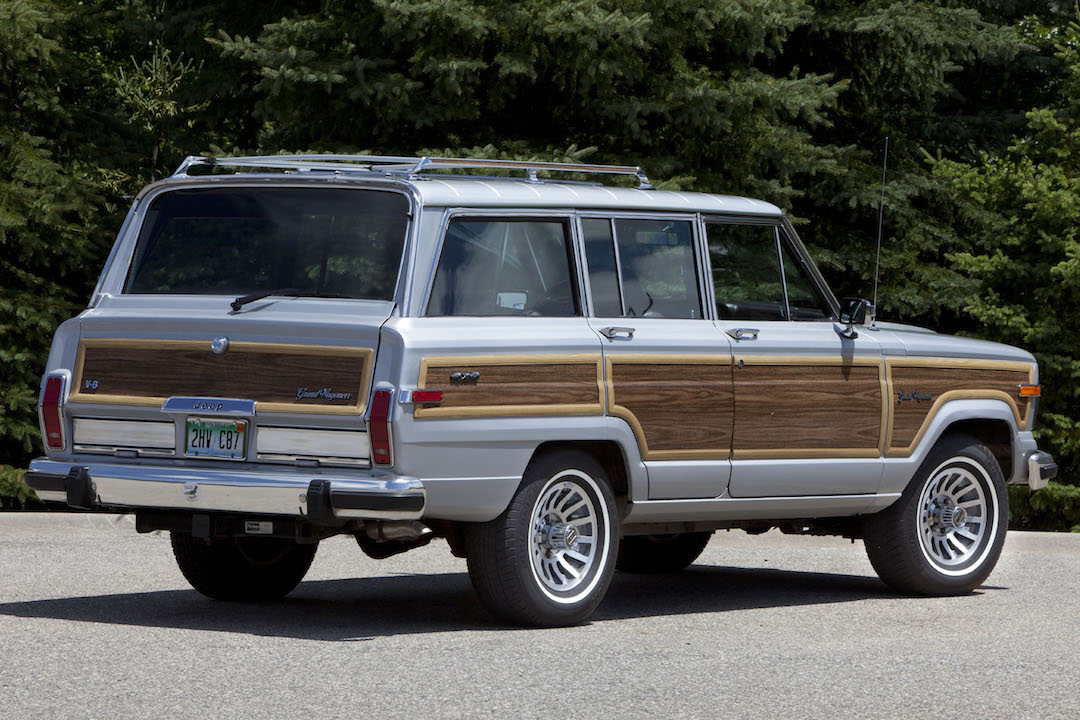
Jeep realises the heritage pull, and a new Wagoneer is tipped to arrive in 2019. Rather sadly, there’s no woodgrain in sight, the new car taking elements of the modern Jeep DNA into production. But, as a nod to its original pioneer, Jeep recently revealed the Wagoneer Roadtrip Concept for its 52nd Annual Moab Easter Jeep Safari. A modern resto-mod, a longer wheelbase and wider-bodied original Wagoneer body sits atop a 5.7-litre V8 and updated mechanicals.
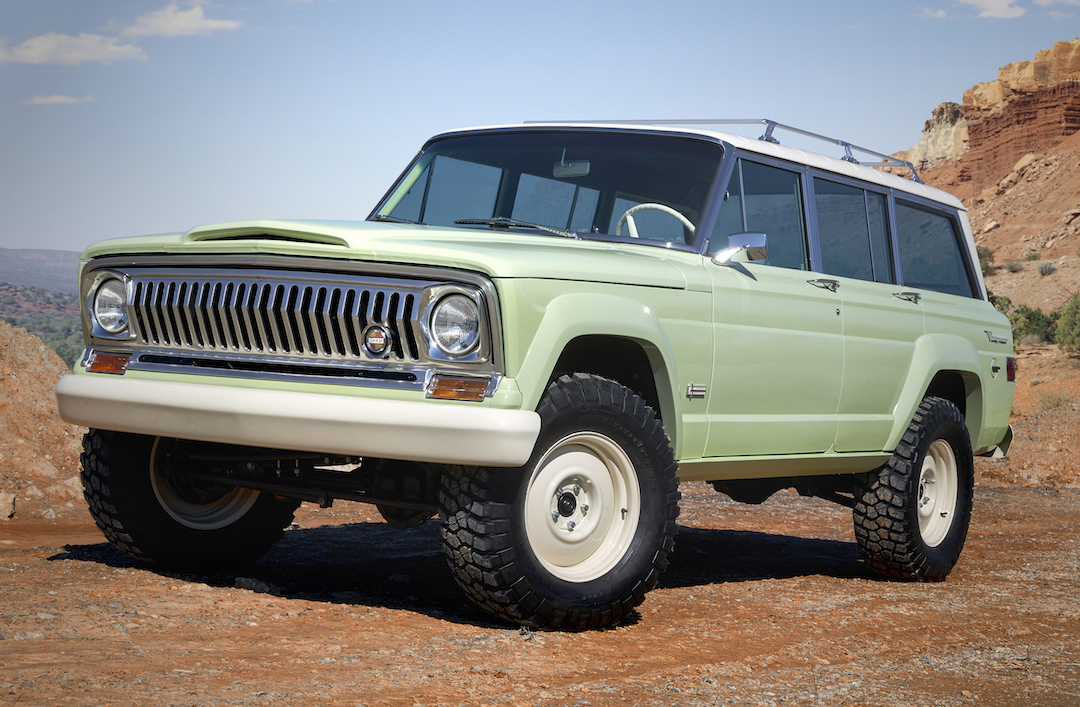
The Wagoneer was like that other icon of practical style, the Mk 1 Golf GTI. No, bear with us, we haven’t inhaled too much of the lingering scent from the ‘wooden’ strips slapped on the side of the Wagoneer pictured at the top of of this page. Just like the hot Golf, the Jeep station wagon was classless, driven by high-flyers as much as it was the family man, and whether housewife or ranch-hand, the Wagoneer enjoyed a cachet which few of its contemporaries shared.
And yes, while some Wagoneers may be have more of a wooden flavour than others, they were all the more cooler for that. When it comes to retro-inspired rides, wood is undoubtedly good.
CLICK TO ENLARGE

